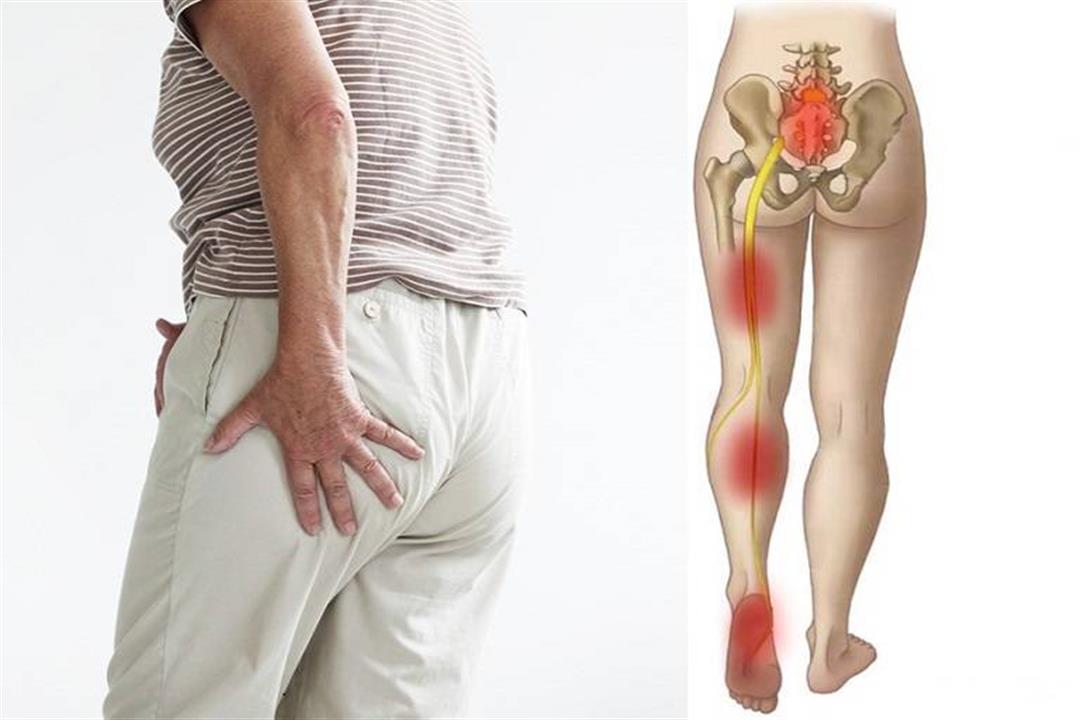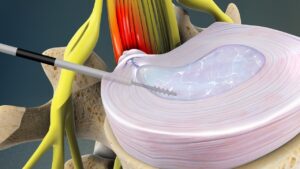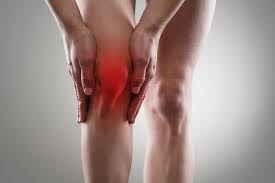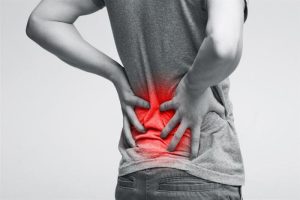Sciatica is a health condition that affects many people around the world, but it is more common in women, especially during certain stages of life, such as pregnancy or after the age of forty. This condition causes severe pain along the sciatic nerve, which extends from the lower back to the feet, and can significantly hinder daily activities. In this article, we review the most important symptoms of sciatica in women , its causes, methods of diagnosis, and treatment, under the supervision of Dr. Hesham Al-Azzizi, a consultant in pain management and interventional spine medicine.

What is sciatica?
Sciatica is not a disease in itself, but rather a symptom resulting from irritation or compression of the sciatic nerve. The sciatic nerve is the longest and widest nerve in the body, extending from the lower back through the buttocks and thighs to the legs and feet. When this nerve is compressed or inflamed, painful symptoms begin, which can be acute or chronic.
Causes of sciatica in women
Although sciatica affects both sexes, there are some common causes specific to women, such as:
- Pregnancy: Weight gain and changes in pelvic position during pregnancy can put pressure on the sciatic nerve.
- Herniated disc: This is the most common cause of sciatica, resulting from the disc pressing on the nerve roots.
- Sitting for long periods: Office jobs or lack of physical activity increase the risk of injury.
- Aging: As you age, changes occur in your spine that can narrow your spinal canal or cause the discs between your vertebrae to wear out.
- Muscle strain: resulting from lifting heavy weights incorrectly or sudden movements.
- Being overweight: This puts additional pressure on the spine.
Common symptoms of sciatica in women
Sciatica symptoms vary among women depending on the condition, and may appear on only one side of the body. The most prominent of these symptoms include:
1. Lower back pain:
Pain in the lower back is usually the first sign of sciatica. It may be sharp or dull, and gets worse with sitting or coughing.
2. Pain extending from the buttocks to the leg.
The patient feels an electric shock-like pain extending from the buttocks, through the back of the thigh, and up to the foot. It may be continuous or appear in the form of attacks.
3. Numbness or tingling:
Many women feel numbness or tingling in the leg or foot, which is a sign of nerve damage.
4. Muscle weakness:
A woman may experience difficulty moving her leg or foot, or feel muscle weakness that prevents her from performing daily tasks.
5. Pain that increases with movement.
Movement, coughing, sneezing, or even changing position may increase the severity of the pain.
6. Inability to stand for long periods.
Some women complain of fatigue when standing or walking for long periods.
Sciatica diagnosis
Dr. Hesham Al-Azzizi, a pain management consultant, follows a precise diagnostic approach based on:
- Clinical examination: assess symptoms and accurately determine the source of pain.
- Magnetic resonance imaging (MRI): to detect a herniated disc or spinal stenosis.
- CT Scan: If MRI is not possible.
- Neurological tests: to determine the extent of sciatic nerve involvement.
The difference between sciatica and regular back pain
It’s important to differentiate between lower back pain caused by muscle tension and sciatica, which is related to the sciatic nerve. The key difference is that sciatica involves pain radiating down the leg, along with neurological symptoms such as numbness and muscle weakness, while muscular back pain remains confined to the back area.
What are the symptoms of sciatica in women and how can they be alleviated?
Sciatica is pain caused by irritation or compression of the sciatic nerve. It is one of the most common types of pain, especially among women. Its symptoms typically begin with pain in the lower back that radiates to the hip and buttocks, and sometimes extends to the leg and foot. The pain may be accompanied by numbness, tingling, or muscle weakness, which can interfere with daily movement. One of the most prominent symptoms women experience is a sharp or burning pain in one leg, which worsens with prolonged sitting, sudden standing, or when coughing or sneezing.
To relieve sciatica symptoms, it’s recommended to get moderate rest and avoid sudden movements or heavy lifting. Hot or cold compresses can also be applied to the lower back to reduce inflammation. Physical therapy is an effective treatment, helping to strengthen back muscles and improve flexibility. In some cases, your doctor may prescribe anti-inflammatory medications or muscle relaxants. Maintaining a healthy weight and performing regular stretching exercises are also important. If the pain persists for a long time or muscle weakness develops, it’s recommended to consult a doctor for a thorough assessment and to develop an appropriate treatment plan.
To read more : Ways to treat sciatica pain
Do symptoms differ in women during pregnancy?
Yes, pregnant women are more susceptible to sciatica due to physical and hormonal changes and increased pressure on the spine. The pain is often on one side and worsens when walking or changing positions.
When should you see a doctor?
You should see a doctor immediately if any of the following symptoms appear:
- Pain that does not improve within two weeks.
- Severe leg weakness.
- Loss of sensation or permanent numbness.
- Difficulty controlling urine or stool (emergency).
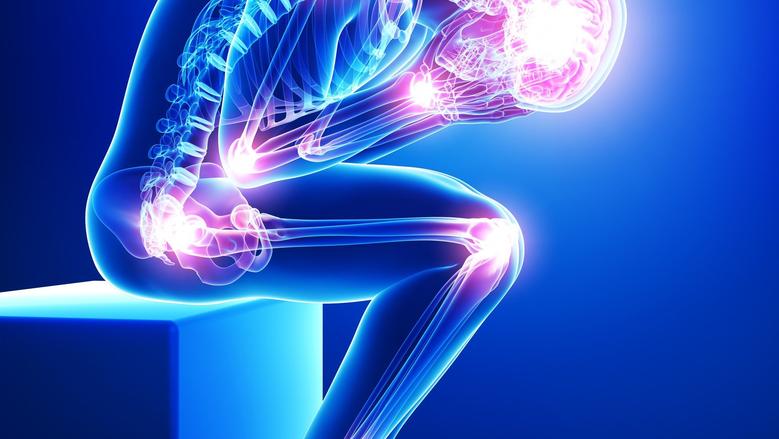
Ways to treat sciatica in women
First: Conservative Treatments
Dr. Hesham Al-Azzizi often begins with conservative treatments, which include:
- Analgesics and anti-inflammatory medications: such as paracetamol or ibuprofen.
- Physical therapy: to stretch and strengthen the muscles surrounding the spine.
- Hot or cold compresses: to reduce inflammation.
- Modify daily activity: Avoid sitting for long periods, and maintain a healthy sitting posture.
Second: Interventional treatment
: If symptoms do not improve within 4-6 weeks, the doctor may resort to:
- Epidural Injections: Inject cortisone around the nerve to reduce inflammation.
- Radiofrequency ablation: A modern procedure to reduce pain sensation by disrupting nerve endings.
- Radiofrequency therapy: one of the advanced solutions available at Dr. Hesham Al-Azzizi’s clinics.
Third: Surgery:
Surgery is rarely resorted to, and is only performed in the following cases:
- The patient does not respond to any treatment.
- Severe pressure on the nerve.
- Serious neurological symptoms such as paralysis or loss of bladder control.
Tips for preventing sciatica
To prevent sciatica or avoid its recurrence, Dr. Hesham Al-Azzizi recommends the following:
- Exercise regularly, especially exercises that strengthen your back and abdominal muscles.
- Avoid sitting or standing for long periods.
- Use a support cushion when sitting for long periods.
- Maintain a healthy weight.
- Lifting things correctly (bend your knees, not your back).
- Adequate rest, especially during pregnancy.
Why choose Dr. Hesham Al-Azzizi for sciatica treatment?
- Long experience in treating pain without surgery.
- Using the latest interventional treatment techniques such as radiofrequency and radio waves.
- Close monitoring of each patient’s condition with a customized treatment plan.
Our branches:
- New Cairo
- Fifth Settlement
- Engineers
- Alexandria
conclusion
Sciatica is a common condition that affects women at various stages of their lives and can significantly impact their quality of life. However, thanks to advances in diagnostic and treatment technologies, it has become possible to control it effectively. If you are experiencing similar symptoms, do not hesitate to visit Dr. Hesham Al-Azzizi to receive the optimal diagnosis and treatment for your condition, without surgery and without pain.
The most common questions about sciatica symptoms in women
Sciatica is pain caused by irritation or compression of the sciatic nerve, the longest nerve in the body that runs from the lower back to the legs. Although the name suggests it's specific to women, it affects both men and women.
Yes, it can be mistaken for pelvic pain, sacroiliac joint pain, or even pain in the uterus or ovaries, so a correct diagnosis is essential.
Yes, sciatica is usually treated with physical therapy, pain medications, or in some cases, surgery may be required if symptoms are severe or do not respond to treatment.
The chances of developing sciatica can be reduced by maintaining a healthy weight, exercising regularly, and avoiding lifting heavy objects incorrectly. What is sciatica?
Can sciatica be prevented?
